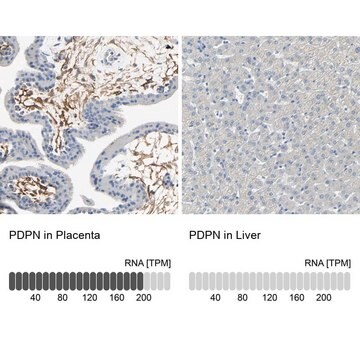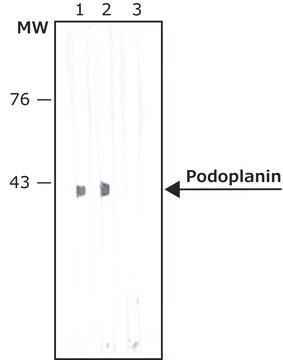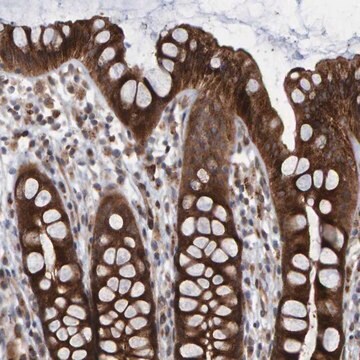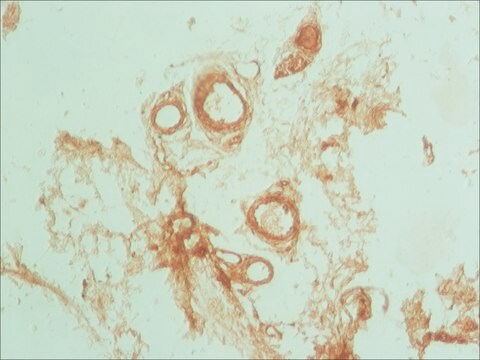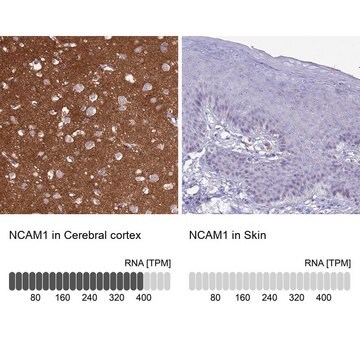詳細
We are committed to bringing you greener alternative products, which adhere to one or more of The 12 Principles of Green Chemistry. This antibody is Preservative-free, produced without the harm or sacrifice of animals and exceptionally stable to allow for ambient shipping and storage if needed and thus aligns with "Waste Prevention", "Designing Safer Chemicals" and "Design for Energy Efficiency".
Click here for more information.
ZooMAb® antibodies represent an entirely new generation of recombinant monoclonal antibodies. Each ZooMAb® antibody is manufactured using our proprietary recombinant expression system, purified to homogeneity, and precisely dispensed to produce robust and highly reproducible lot-to-lot consistency. Only top-performing clones are released for use by researchers. Each antibody is validated for high specificity and affinity across multiple applications, including its most commonly used application. ZooMAb® antibodies are reliably available and ready to ship when you need them.
特異性
Clone 3N7 is a ZooMAb® rabbit recombinant monoclonal antibody that specifically detects Podoplanin. It targets an epitope within 20 amino acids from the extracellular domain.
免疫原
KLH-conjugated linear peptide corresponding to 20 amino acids from the extracellular domain of human Podoplanin.
アプリケーション
Quality Control Testing
Evaluated by Western Blotting in NIH3T3 cell lysate.
Western Blotting Analysis: A 1:1,000 dilution of this antibody detected Podoplanin in NIH3T3 cell lysate.
Tested Applications
Western Blotting Analysis: A 1:1,000 dilution from a representative lot detected Podoplanin in Human placenta tissue lysate.
Flow Cytometry Analysis: 0.1 µg from a representative lot detected Podoplanin in one million HEK293 cells.
Immunocytochemistry Analysis: A 1:100 dilution from a representative lot detected Podoplanin in A431 cells.
Immunohistochemistry (Paraffin) Analysis: A 1:100 dilution from a representative lot detected Podoplanin in Human placenta tissue sections.
Affinity Binding Assay: A representative lot of this antibody bound Podoplanin peptide with a KD of 3.6 x 10-7 in an affinity binding assay.
Note: Actual optimal working dilutions must be determined by end user as specimens, and experimental conditions may vary with the end user.
ターゲットの説明
Podoplanin (UniProt: Q86YL7; also known as Aggrus, Glycoprotein 36, Gp36, PA2.26 antigen, T1-alpha, T1A) is encoded by the PDPN (also known as GP36) gene (Gene ID: 10630) in human. Podoplanin is a highly glycosylated protein that serves as the endogenous ligand of C-type lectin-like receptor-2 (CLEC-2) and is highly expressed in various tumors and in some normal cells, such as lymphatic endothelial cells and podocytes. A high degree of expression is observed in placenta, lung, skeletal muscle, and brain. It may be involved in cell migration and/or actin cytoskeleton organization. Podoplanin is localized to actin-rich microvilli and plasma membrane projections, such as filopodia, lamellipodia, and ruffles. It is synthesized with a signal peptide (aa 1-22), which is cleaved to produce the mature form that contains an extracellular domain (aa 23-131), a transmembrane domain (aa 132-152) and a short cytoplasmic domain (aa 153-162). Podoplanin possesses three tandem repeat of platelet aggregation-stimulating (PLAG) domains in its N-terminal region. Among the PLAG domains, sialylated O-glycan on Thr52 of PLAG3 is essential for the binding to C-type lectin-like receptor-2 (CLEC-2). Interaction of human podoplanin with CLEC-2 mainly involves Glu47 and Asp48 in the platelet PLAG3. Podoplanin can be cleaved by a metalloprotease within its extracellular domain to generate a membrane-bound C-terminal fragment (PCTF33) and an extracellular fragment. The PCTF33 is further processed between Val-150 and Val-151 by -secretase to generate the intracellular domain of podoplanin (PICD). This ZooMAb® recombinant monoclonal antibody, generated by our propriety technology, offers significantly enhanced specificity, affinity, reproducibility, and stability over conventional monoclonals. (Ref.: Kaneko, MK et al. (2017). Cancer Med. 6(2):382-396; Martin-Villar, E., et al. (2015). Oncogene. 34(34); 4531-4544; Yurrita, MM., et al. (2014). Int. J. Biochem. Cell Biol. 46; 68-75).
物理的形状
Purified recombinant rabbit monoclonal antibody IgG, lyophilized in PBS with 5% Trehalose, normal appearance a coarse or translucent resin. The PBS/trehalose components in the ZooMAb formulation can have the appearance of a semi-solid (bead like gel) after lyophilization. This is a normal phenomenon. Please follow the recommended reconstitution procedure in the data sheet to dissolve the semi-solid, bead-like, gel-appearing material. The resulting antibody solution is completely stable and functional as proven by full functional testing. Contains no biocide or preservatives, such as azide, or any animal by-products. Larger pack sizes provided as multiples of 25 µL.
保管および安定性
Recommend storage of lyophilized product at 2-8°C; Before reconstitution, micro-centrifuge vials briefly to spin down material to bottom of the vial; Reconstitute each vial by adding 25 µL of filtered lab grade water or PBS; Reconstituted antibodies can be stored at 2-8°C, or -20°C for long term storage. Avoid repeated freeze-thaws.
法的情報
ZooMAb is a registered trademark of Merck KGaA, Darmstadt, Germany
免責事項
Unless otherwise stated in our catalog or other company documentation accompanying the product(s), our products are intended for research use only and are not to be used for any other purpose, which includes but is not limited to, unauthorized commercial uses, in vitro diagnostic uses, ex vivo or in vivo therapeutic uses or any type of consumption or application to humans or animals.

